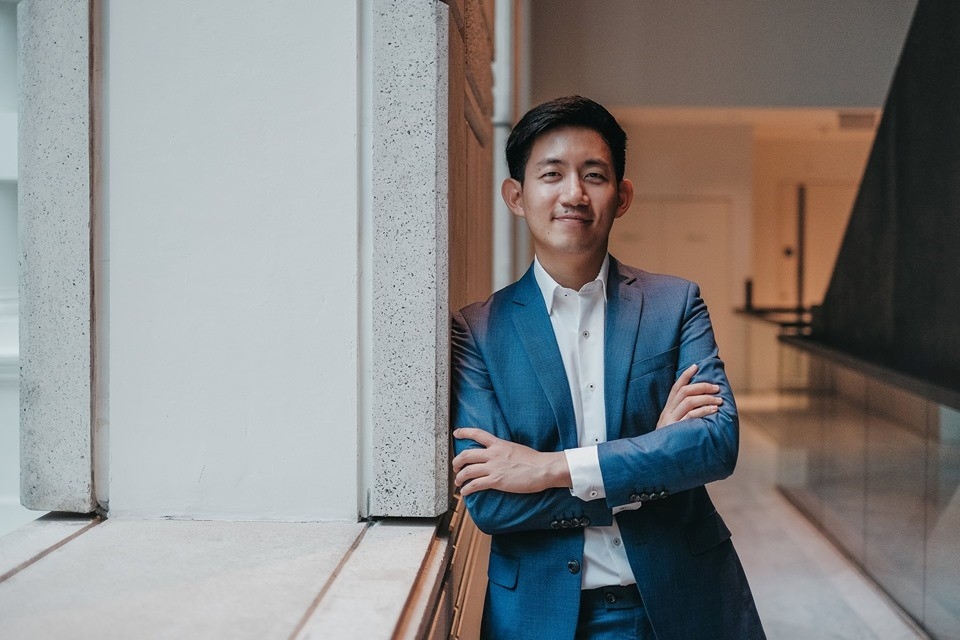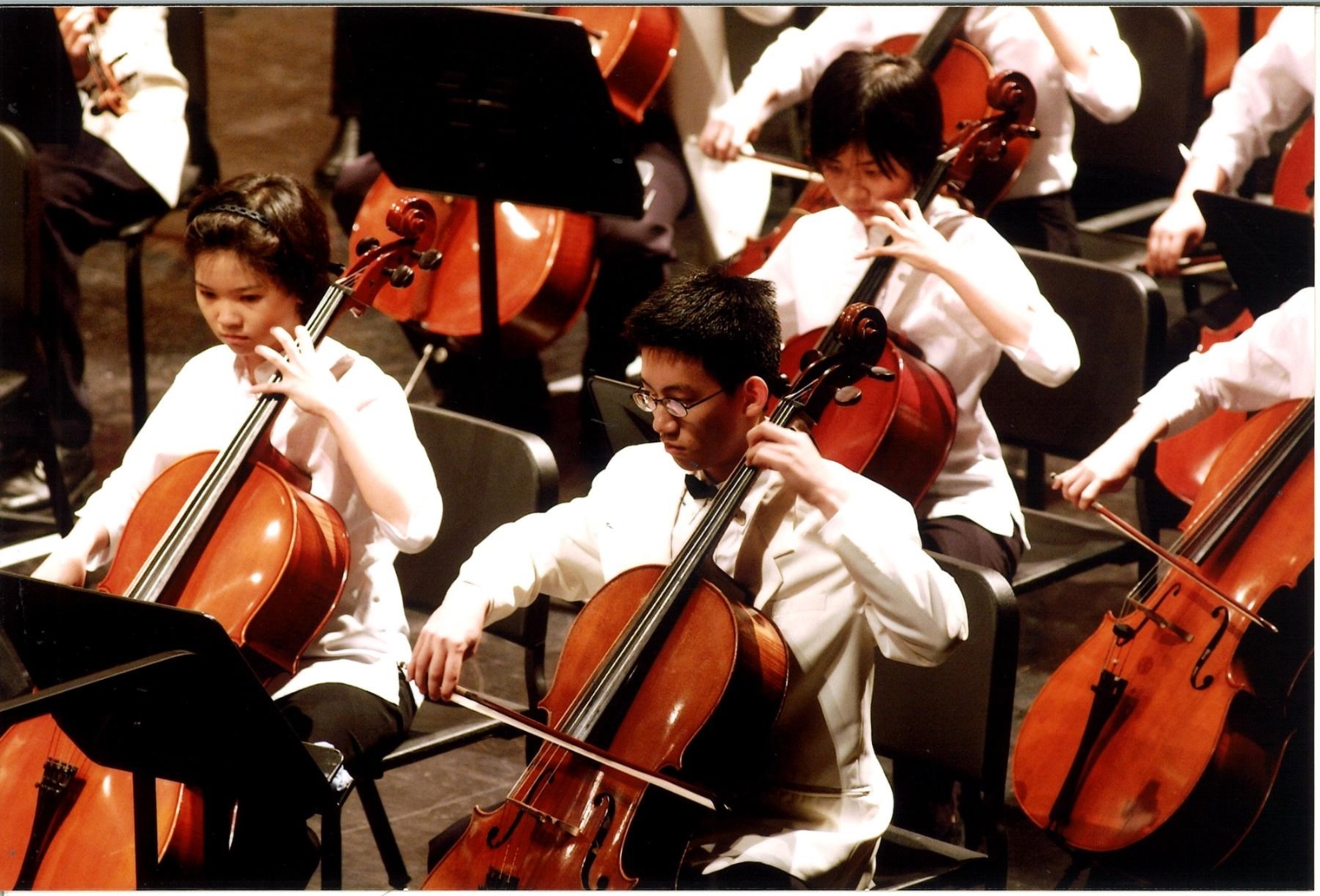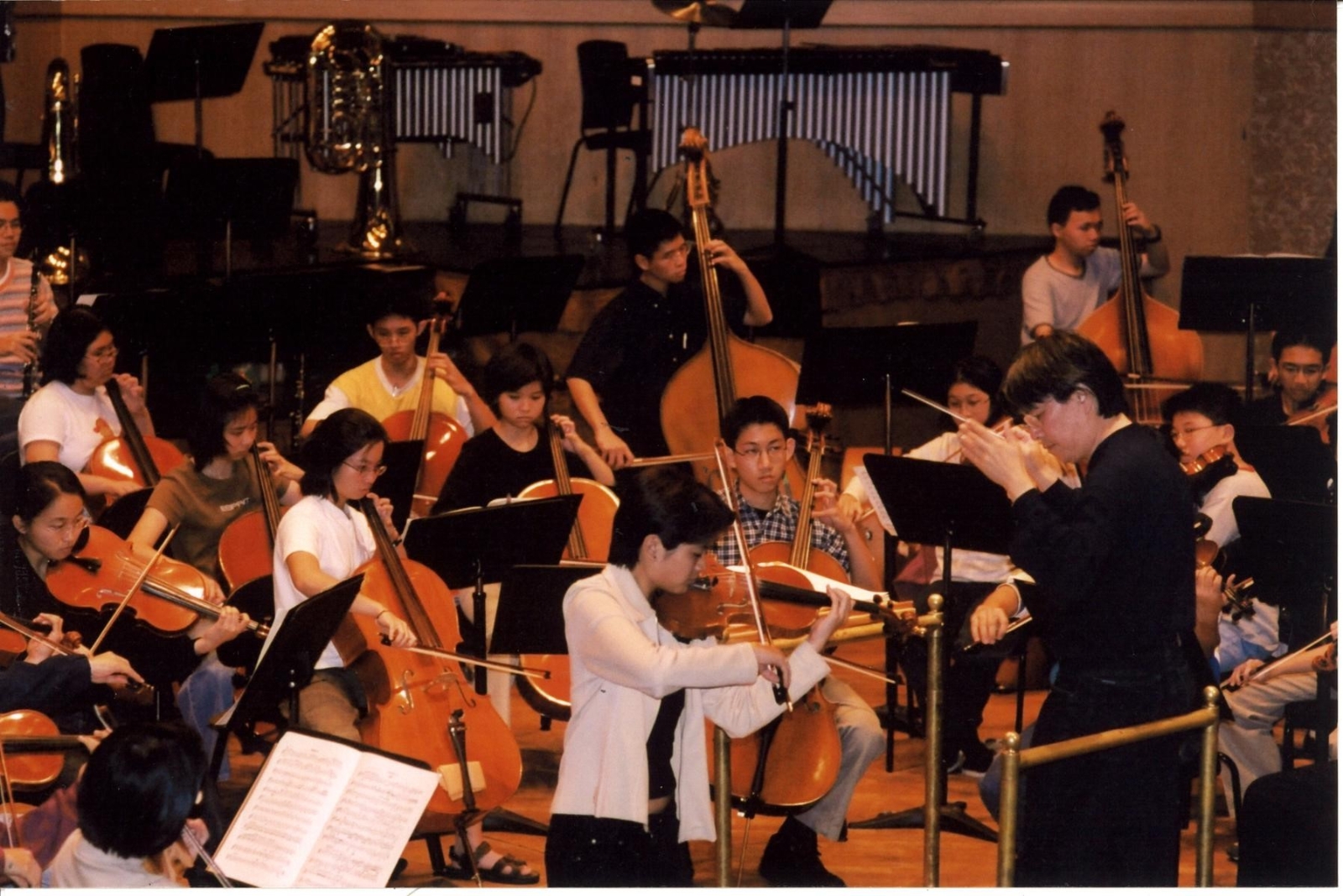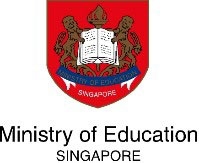SNYO SPOTLIGHT – LIN JUAN
29 October 2021
John Fung (SNYO Oboist) interviews Lin Juan (SNYO Associate Conductor from 2016 to 2021, and SNYO alumnus) about his hobbies, orchestra stories and more!

John Fung (JF): Your favourite pastime?
Lin Juan (LJ): Cycling and going down YouTube rabbit holes. Right now it’s this British comedian called Stewart Lee.
JF: Your scariest moment in your life?
LJ: I don’t have one, but I think what’s happening right now is scary. Especially for young people, missing all these educational and travel opportunities that they would have had if not for the COVID situation.
JF: Happiest moment of your life?
LJ: There’s a few. But I think getting the phone call that I got the position of Associate Conductor at SNYO was one of them. I didn’t expect to get it, it was a big surprise.
JF: Favourite composer?
LJ: I’m a cellist, so Bach!
JF: Favourite musical work?
LJ: It always changes, but I think Mozart’s Requiem is one of those pieces where there’s no moment that doesn't fully touch my soul.
I remember when I was young and was just starting to discover these great works, whenever I was feeling sick and in bed, I would put on a recording of Beethoven’s Ninth Symphony by the Chamber Orchestra of Europe conducted by Nikolaus Harnoncourt. I would be in bed, fake conducting through the symphony, completely gripped by the drama of the music. It was exhilarating. Everything felt better after that, I would feel completely okay.
JF: So would you say you got interested in conducting from that age?
LJ: No, not really. It was just the thrill.
JF: What have you been watching lately?
LJ: The Crown is good!
JF: Have you been listening to anything lately?
LJ: Thrace, an album by the French-German cellist, Jean-Guihen Queyras. It’s an album where the cello is complimented with the Greek Lyra (ancient three-stringed fiddle) and Iranian hand percussion instruments. It’s a collection of pieces from these various areas, and you wouldn’t see how the cello fits in, but it just does. It’s amazing.
JF: Your go-to food?
LJ: Easy! Chicken rice. The one on Purvis Street (Chin Chin Eating House), I think they’re quite good.
JF: What do you do in SNYO?
LJ: In essence, I am probably the first conductor that most young musicians in SNYO/SNYS will experience in their introduction to the world of orchestral playing. So my role is to facilitate that and open their eyes and ears to the different facets of orchestral playing, which is very different from non-orchestral music making (like solo playing).
Apart from taking rehearsals, I also sit in for assessment and auditions. I also come up with the repertoire for SNYS, which would have to be informed by particular pedagogical reasons. Right now, SNYS is doing the Pizzicato Polka by Strauss Jr. for the strings, which is a great opportunity to focus on the technique of good pizzicato while bringing out the fun side of the music.
JF: How about some memorable stories from your time with SNYO as a conductor?
LJ: I think each season is a highlight. I really like when there’s a chance to see them week after week, where we get to see how things grow. When there’s a break for auditions or assessments, sometimes it feels like you have to rebuild that connection.
More memorable highlights would be the tours. I’ve been on two tours, one to Kuala Lumpur and another to Guangzhou and Hong Kong.
JF: Tell me about a typical day in your life.
LJ: I sleep really late, and so I get up late. I’ll try to get my cello practice done in the morning. At this point in my life, especially because I split my time between cello, conducting and other commitments, it’s something I find I need to keep up whenever I have the time. When I have concert to work towards, I try to be a little more diligent in carving out time for cello. Right now in the absence of numerous concerts and performances, I do more teaching. Also if the weather is nice at night, I’ll go for a bike ride with friends.
JF: Distance?
LJ: Oh, it could be anywhere from 30km to a round-the-island trip which would be about 130km.

JF: You were in SNYO as a cellist?
LJ: I started learning the cello under what is now the New Learners Scheme when I was Secondary 1. So that’s quite late for today’s standards. I had a really good teacher, who still plays in the Singapore Symphony Orchestra, Ms Zhao Yu Er. While I wasn’t really serious straightaway, I slowly fell in love with the instrument. By the time I got into the Main Orchestra, it was in Secondary 4. Back then, we didn’t really go through formalised assessments, the conductor would come to Training Orchestra rehearsals and walk around. A bit like a chef picking his ingredients at the market - two of these tomatoes, two of these onions. So you get thrown into the Main Orchestra’s programme halfway, and the first piece for me was Britten’s Young Persons’ Guide to the Orchestra. Of which the cello variation has five sharps in the tenor clef. As a young cellist, I didn’t understand it all - I just saw it as a strange melody - if you could call it that. That experience was an eye-opener, a real deep end for me. I think it’s a lovely melody now though.
JF: How about your most memorable experience in SNYO as a cellist?
LJ: Well I really enjoyed every single concert, but something that stuck in my mind was the formation of the SNYO Principal String Quartet. It was with people who I was already friends with. We took it really seriously, spent a lot of time together rehearsing, in the way I think chamber groups should in order to form a strong, cohesive sound and feel for the music. This was in my second year of Junior College (JC) and thinking back, it feels as if I was a full-time musician and a part-time student. I was just reminiscing with a JC friend, and she echoed the same sentiment, and she hadn’t a clue what I was doing in school. (chuckles) But don’t do that, stay in school.
JF: What was most challenging about SNYO as a cellist?
LJ: (pauses) I think back then it was really about getting the music under your fingers, getting it in your head. When you’re at that age, or at least when I was at that age, a lot of the repertoire was something I had to work really hard at.
JF: And I suppose to overcome it, you practised?
LJ: It’s about finding the right way to practise. It’s not something that in retrospect I think I did really well. Now that I am a teacher and a conductor, I have in my mind that “Oh, my students should practise this and that way.” But I myself as a student probably wasn’t the most astute in that respect. I guess there was still a lot for me to grow into at that age.
JF: Besides the musical aspects, what have you taken away from SNYO that you find useful now?
LJ: Some of my orchestra mates who were my peers or slightly older, they now occupy some really prominent roles outside of the music industry. We have doctors, quite a few lawyers, and if I’m not wrong, there’s someone who works in the Attorney-General Chambers. Although I never envisioned that kind of life, it’s really quite nice to see that from this same experience that we all had at that age, that we all are doing quite well in different roles in society. It’s a very happy thing for me to see.
JF: Which brings me to the next question, was there a turning point in your life where you decided music was the thing to pursue?
LJ:
I’ll turn the question around: there was no point in my life where I thought about anything other than being a musician. Partly because of my family background: I come from a family of musicians. Anyone that my parents interacted with was most likely a musician. It was always quite a single-minded future that I had even at that age.

JF: I understand your father conducted while you were in SNYO as Principal Cellist?
LJ: (laughs) Yes.
JF: Would you say it felt different?
LJ: Of course! When you’re at that age, he’s your father who is the teacher. He could be quite a stern character. I think a lot of my orchestra mates were quite scared of him, and they’ll still remind me that “Back then, your father said this and this to me” and I’ll just groan inside. At that age, you don’t really know how to compartmentalise the conductor and the father figure.
JF: What would you have been if you weren’t a conductor or cellist?
LJ: I get asked this sometimes and I don’t know where to begin looking for the answer. I come from a family of teachers. Both my parents were teachers in their own right, and some uncles and aunts were also teachers, so I don’t think that’s too far of a stretch to think that I would be in some teaching role.
JF: What instrument would you have taken up if it wasn’t the cello?
LJ: I’d like an instrument where I can stand and walk around and play. So that’s almost everything except the cello and bass. I think the violin is nice and I quite like the register of the viola. Now that I conduct, every so often I like to demonstrate, and it’s quite hard to do that with the cello because you can’t really lift it. I think an instrument that is up here (imitates holding a violin at shoulder level) and visible is great. If it had to be a wind instrument, I think I would’ve quite like to play the bassoon. It’s fair to say I’m sticking to the bass and tenor clef family there.
JF: You like the sound of the bassoon?
LJ: I like the sound, I like the role it plays. It anchors the section of the orchestra and it has lots of potential for melody.
JF: Lastly, could you describe SNYO in 3 words?
LJ: (pauses) Memories for life.
Feeling Inspired? Join Us Now
The Singapore National Youth Orchestra organises auditions regularly throughout the year! Audition details and guidelines can be found at www.snyo.org.sg/audition.

